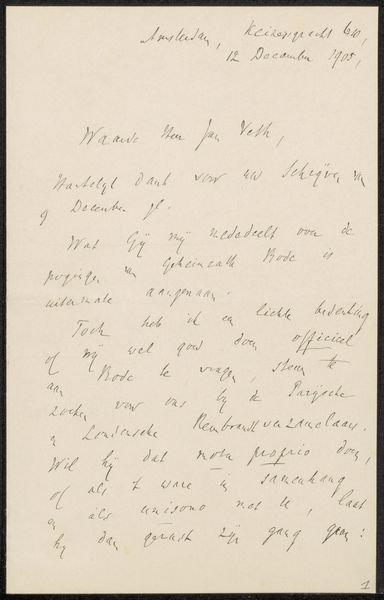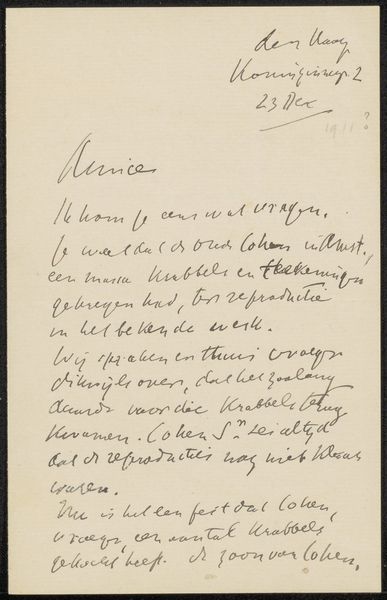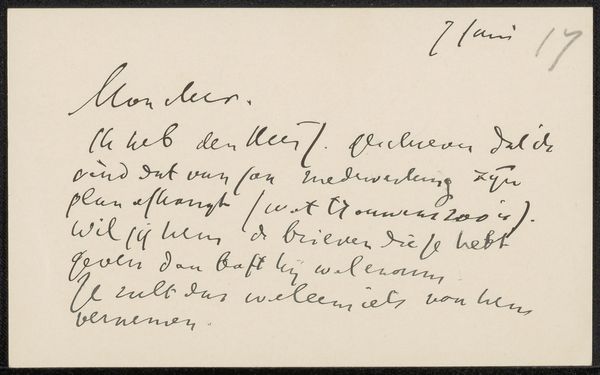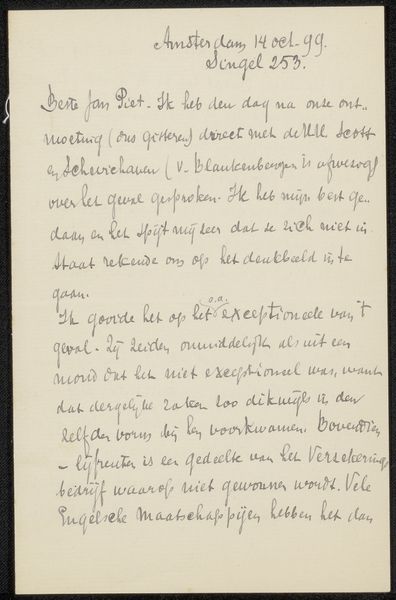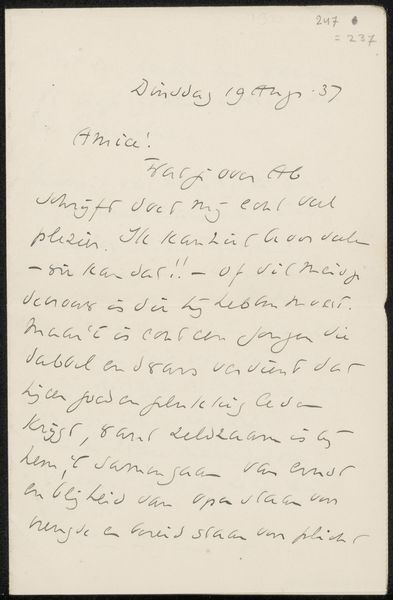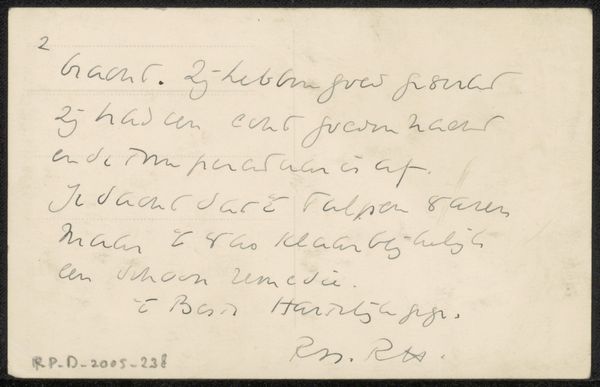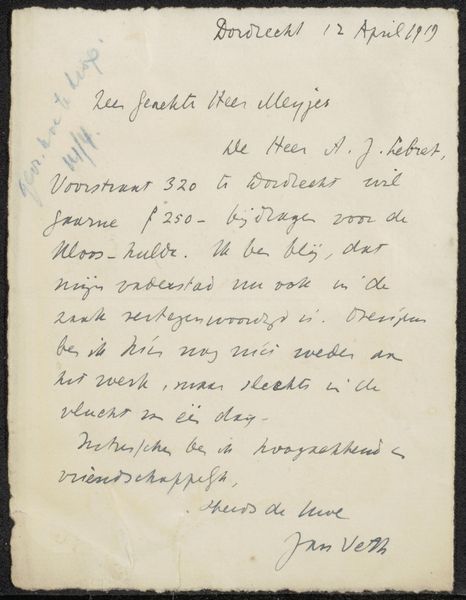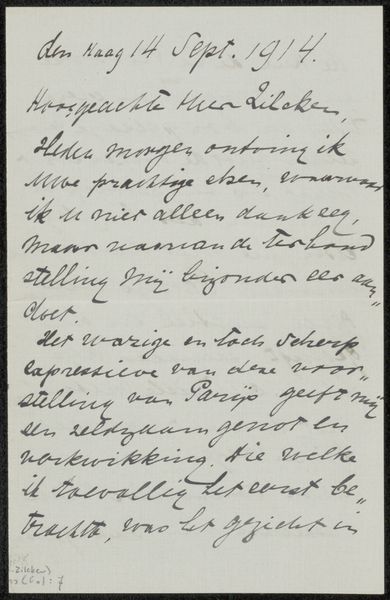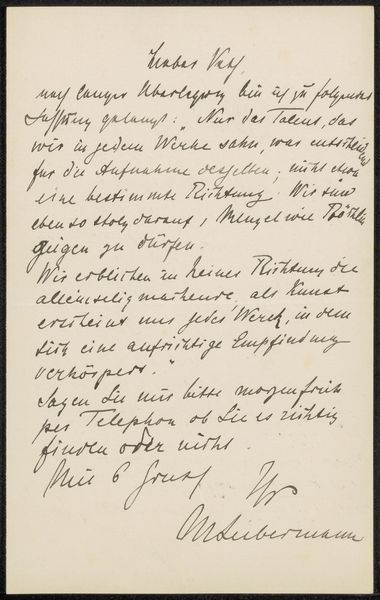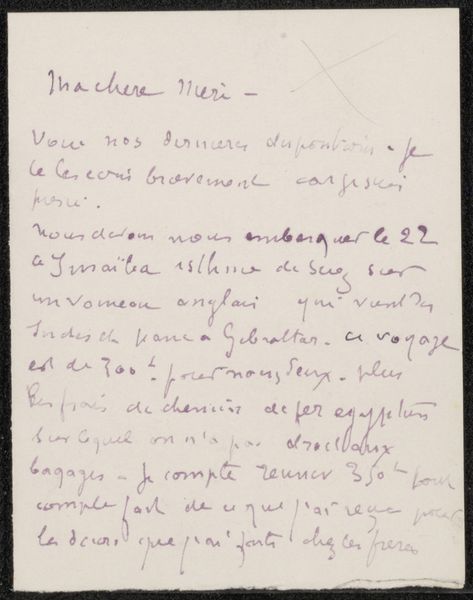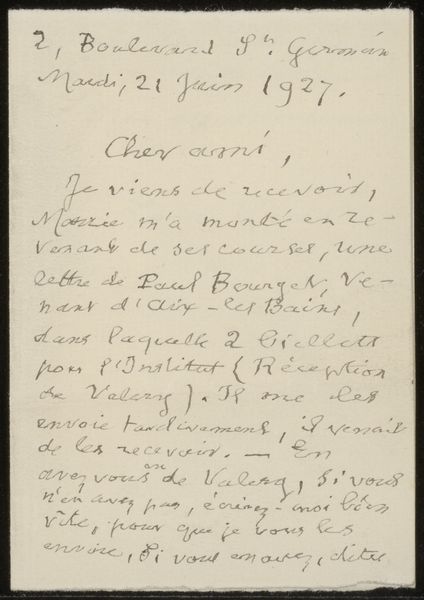
drawing, paper, ink, frottage
#
drawing
#
script typography
#
hand-lettering
#
hand drawn type
#
hand lettering
#
paper
#
personal sketchbook
#
ink
#
hand-written
#
hand-drawn typeface
#
expressionism
#
thick font
#
handwritten font
#
frottage
#
small lettering
Copyright: Rijks Museum: Open Domain
Editor: Here we have "Brief aan Jan Veth" by Antoon Derkinderen, likely created between 1906 and 1927. It’s a drawing in ink on paper. What strikes me immediately is the intimacy and almost frantic energy of the handwriting. What can you tell me about it? Curator: The act of handwriting itself is so loaded, isn’t it? Especially positioned within an Expressionist context. Here, we see Derkinderen not just communicating information but also performing a kind of raw, unfiltered emotion through the very *form* of the letters. Consider the audience; Veth was an art critic, an intellectual. How does Derkinderen use this personal format to circumvent that potentially hierarchical dynamic? Editor: That's a great point, framing it in terms of a deliberate power play! I hadn't considered how choosing handwriting flattens the distance between artist and critic. So, the gestural quality almost becomes the message, rather than the literal content of the words? Curator: Precisely. Think about the politics embedded in the personal. This isn't a formal declaration; it's a handwritten letter. Derkinderen bypasses established art-world dialogues by addressing Veth directly and intimately. What does that choice say about his artistic positioning? Is he seeking validation, or forging a new kind of relationship beyond established norms? Editor: That's interesting. I guess it also speaks to the importance of relationships and community within the art world at the time, trying to build allies? Curator: Exactly. And the possible vulnerabilities that such close ties reveal. How can art historians today leverage intersectional readings, incorporating gender, class, and race, to reveal the latent power dynamics that impact subjective viewpoints and opinions? How can the subjective inform objective criteria? Editor: Wow, this piece has way more going on beneath the surface than I initially realized. I thought it was just a simple note! Curator: These seemingly simple acts often hold the richest layers of complexity! It is useful to approach such a work informed by the socio-political situation of its creation.
Comments
No comments
Be the first to comment and join the conversation on the ultimate creative platform.

